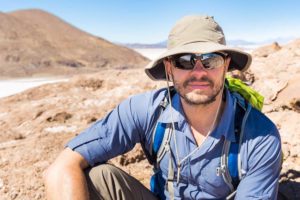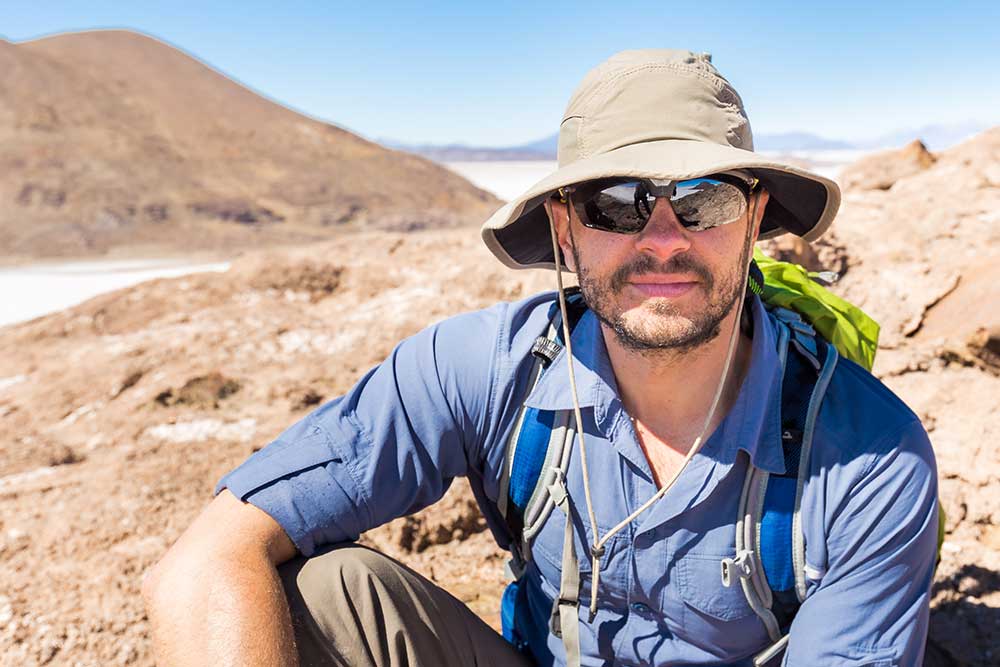Disclaimer: The information on our website is provided for general information purposes only. We make no representations or warranties of any kind, express or implied, about the completeness, accuracy, reliability, suitability or availability with respect to the website or the information contained on our website for any purpose. Any reliance on such information is therefore strictly at your own risk and we are not liable for any damages or losses arising out of or resulting from your reliance on any information contained on our website.
A geophysicist studies various aspects of the earth. According to the U.S. Geological Survey, they study gravity, magnetic, electrical, and seismic activity occurrences. Additionally, geophysicists document, evaluate, and take measurements of geographic features and anomalies. Watch a video to learn what a geophysicist.
How to Become a Geophysicist
Geophysicists must earn a minimum of a bachelor’s degree; however, this is for an entry-level position. Most employment opportunities usually require master’s degrees. If you want do research you must pursue a Ph.D. Undergraduate coursework usually includes geology, mathematics, environmental science, or physics. Advanced degrees require more specific studies in the specialty of choice. Areas can include oceanography, atmospheric physics, climatology, planetary, petroleum, environmental, and mining. Job prospects are higher if you have a strong background in computer science or technology.
Though academic credentials are essential, those interested in geophysics should also try to gain hands experience. Access to these opportunities may be limited depending on where you live; however, internships or summer programs with geophysical companies, university geophysics department, or the U.S. Geological Survey can be options. You can find a list of a list of opportunities on the United States Geological Survey (USGS) websites’ Pathway Programs tab (opens in another link). Another resource to explore is the AGU Advancing Earth and Space Science; they offer mentorships, scholarships, grants, and even have student competitions.
If you have yet to graduate high school, taking as many science and math classes as possible would be a plus. Geophysicists also work with computers while researching, so computer courses can also be helpful, as mentioned earlier in this article.
Job Description of a Geophysicist

Many geophysicists specialize in an area of geophysics. Therefore, the job description would change pending on the specialty. Some may spend more time indoors in a lab environment where others may spend a lot of time outdoors, making observations and collecting samples.
A geophysicist’s duties can include measuring, tracking, and documenting data from various physical properties on earth. They also evaluate and exam information received. Geophysicists often have to travel worldwide to examine geological events that have happened or may have been predicted. Geophysics is a research-based career field, therefore one must have the ability to hypothesize, problem-solve, and question or challenge previously held assumptions from their collected data. Geophysicist can work in various industries, from academics, government, and mining, to name a few.
For instance, Jay Wellik, a geophysicist, studies volcanos. His area of expertise in geophysics is researching why volcanos erupt and what indicators there may be that an eruption may occur. He tracks seismic activity and then follows what happens before, during, and after a volcano erupts. Geophysicists usually work full-time hours; however, they often work irregular hours, as mentioned previously. Most work for private e engineering and oil industries, governmental geological surveys, or environmental protection groups.
Geophysicist Career Video Transcript
Laura Stern, of the U.S. Geological Survey at the Gas Hydrates Lab in Menlo Park, California: We make a number of different hydrates in the laboratory. Some are with hydrocarbons; methane being the most abundant. We also make carbon dioxide hydrate, ethane hydrate, propane, a number of different structures. Liquid nitrogen is very cold. It’s about 100 degrees colder than the temperature at which these hydrate samples would dissociate, when they would decompose to ice plus gas on the tabletop.
In here we have a little piece of methane hydrate. It’s enclosed in a soft metal jacket. So the samples we make, their polycrystalline. They look like snow, it looks like compacted snow but honestly, it does contain gas inside. Take a little piece off here and as it warms up, you’ll begin to see it pop. It’s reverting to ice plus gas and then as the ice would melt as it continues to warm, it will end up being water plus gas. So this will form anywhere you have water and gas at moderately low temperatures or high pressure.
Steve Kirby, Geophysicist
My name is Steve Kirby, I’m a Geophysicist here at the U.S. Geological Survey in Menlo Park. I work with Laura Stern who is also a Geophysicist in this lab that is devoted towards the investigation of planetary ices and gas hydrates. Gas hydrates in nature occur in very remote places and they are very complex with the interactions and conditions that they form under and samples that are brought up are under some sort of alternation or decomposition. We’ve educated ourselves by experiment in learning how to make them in a form that’s suitable for doing material property testing. This is an unusual lab and there are only a handful of them worldwide and we are very fortunate to be here at the Geological Survey and to have the opportunity of working on them.
Article Citations
Bureau of Labor Statistics, U.S. Department of Labor, Occupational Outlook Handbook, Geoscientists.
National Center for O*NET Development. 19-2042.00. O*NET OnLine.
This video was produced by the government for the U.S. Geological Survey. The USGS Gas Hydrates Lab is funded by the Department of Energy and the USGS Gas Hydrates Project.

